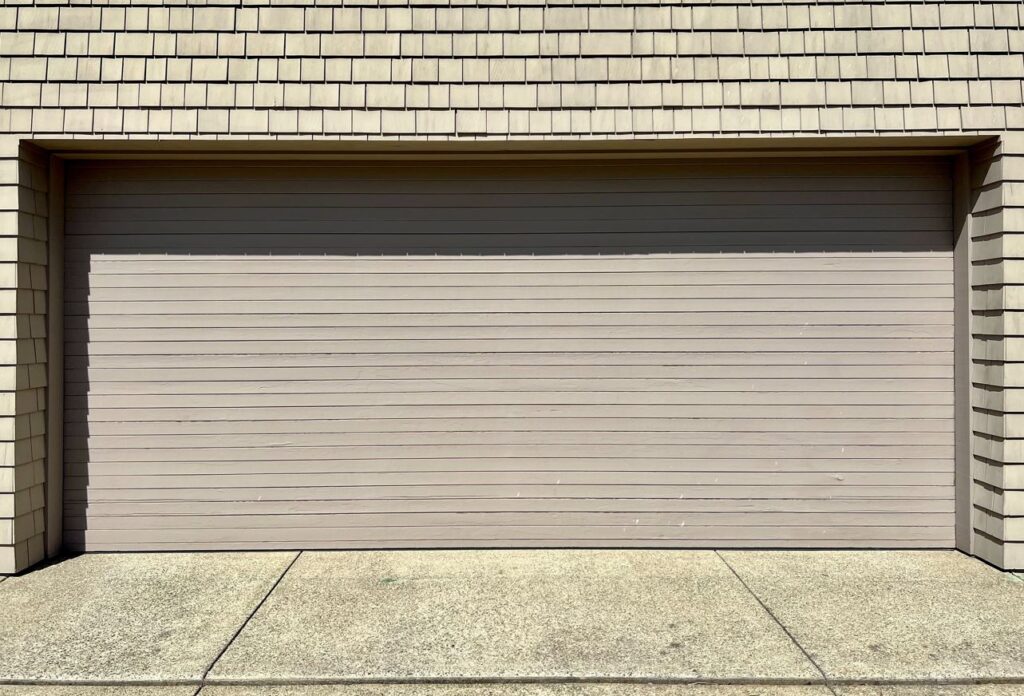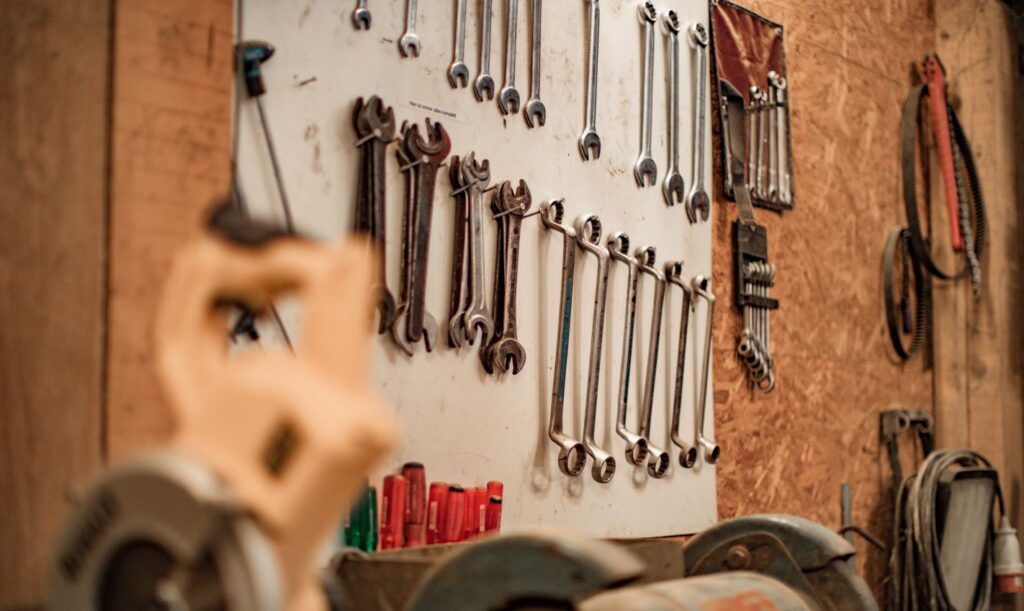Finding a good way to keep large tools and equipment out of the way in the garage is one of the most difficult tasks in home repair and organisation. The battle to organise cumbersome equipment, apparatus, and gear is a common experience for anybody who works with their hands, whether as a weekend warrior or a professional. But have no dread! Share the best and most effective ways to organise your garage in this comprehensive blog post. Discover the finest ways to reclaim your garage and turn it into a well-organised haven for your heaviest equipment, from sturdy shelving to ingenious space-saving tricks.
Best Heavy Equipment Storage Practises
Heavy machinery must often be put away for a few months or seasons. Whether you’re putting away your equipment for the entire winter or just for a few months, you should take some crucial measures to keep it in good working order. To properly store heavy equipment, consider these suggestions.
Prepare Your Storage Area
The safest place to put heavy machinery is in a building that completely encloses it, such as a garage, barn, or warehouse. The area must be pest- and animal-free, insulated, clean, and dry. An additional precaution against flooring damage caused by tracked construction equipment is using a protective floor mat. Protect your machinery from the elements and rust by covering it with a high-quality tarp.
Clean And Grease Equipment Before Storage
Before putting away heavy machinery for an extended period, ensure you thoroughly clean it on the inside and outside. Cleaning the engine and lubricating its moving parts ensures it will be free of dirt and debris when turned back on. More detailed information on how to properly lubricate the moving parts of your equipment can be found in the owner’s handbook.
Top Off Your Fuel And Oil Tanks
Condensation in your gasoline and oil tanks is a major problem. Moisture accumulation can cause expensive engine troubles in the future, so top off both before putting them away is a good idea. Putting some fuel stabiliser in your gas tank would be best to prevent the fuel from becoming bad.
Check Tire Pressure
Before putting away heavy machinery for the season, make sure the tyres are in good condition and free of leaks. If your machines will be stored on concrete, it is recommended that you slightly over-inflate the tyres to prevent flat spots from developing while in storage, as stated in the owner’s manual.
Complete Repairs Before Storage
Before putting away your construction tools, ensure they are in good working order. Even little concerns can balloon into big disasters when equipment is left untouched for months. You can save money on maintenance costs when you reactivate your machines by having them inspected and serviced before putting them away for storage. Put in a request for machine maintenance.
Keep Your Heavy Equipment Secure
If you don’t take the necessary precautions, machines can be stolen. Theft deterrents, including security cameras, alarms, and telemetry systems, should be installed in addition to locking up your equipment and securing your storage area.
Garage Workbench Storage
A garage workbench is a fantastic option if you occasionally need to tinker and have fewer tools than you’d like to store. Many workbenches have storage compartments and pegboards to hang tools. Containers and boxes can also be stashed here.
Handy Garage Tool Storage
Storage can be problematic for tool collections because of the wide range of tool sizes and shapes. If you want to keep your tools neat, invest in a metal multi-storage tool cabinet with drawers and shelves. Wheeled cabinets save time and effort by allowing you to quickly relocate them to the location where you’ll be working.
Garage Bicycle Storage Ideas
The low-tech nature of biking is one of its many advantages. You’ll need ingenuity to keep your bike dry in a garage. The best way to keep your bike safe and out of the way is to put it in the garage.
If your garage is tight on space, hanging your bike is a terrific solution. You can use a conventional rope or chain or buy specialised hooks made specifically for motorcycles. Before you set out, make sure your bike is locked up.
FAQs About Garage
What’s The Importance Of Labeling Storage Containers For Heavy Equipment?
Labeling storage containers is crucial for easy identification and access to your heavy equipment. Use clear, legible labels to indicate the contents of each container. This saves time and reduces frustration when searching for specific items.
Can I Create A Designated Workspace Within My Garage For Heavy Equipment?
Yes, you can create a designated workspace within your garage for heavy equipment by allocating a specific area. Install a workbench with storage underneath and proper lighting to enhance productivity and organization.
What Safety Precautions Should I Take When Storing Heavy Equipment In My Garage?
When storing heavy equipment, prioritize safety by securing items properly on shelves and using safety locks for hazardous tools. Ensure clear pathways and emergency exits in case of accidents.
How Can I Maximize The Use Of Overhead Space For Heavy Equipment Storage?
Maximizing overhead space in your garage can be achieved with overhead racks or ceiling-mounted storage systems. These systems are ideal for items that are used less frequently, such as seasonal tools or equipment.
What Should I Do To Maintain The Organization Of My Garage Storage For Heavy Equipment?
Regular maintenance is key to keeping your garage storage organized. Perform periodic checks, reorganize as needed, and dispose of any unnecessary items to maintain an efficient storage system.
Garage Storage Tips To Save Space
The garage was originally intended to be a simple parking spot. It has evolved into something far larger. The garage now serves as a makeshift workshop, recreation area, and dumping ground for household items without permanent homes elsewhere. People always seek innovative methods to make the most of their garage space. Thus, garage storage has become a popular topic.
Garage Sports Equipment Storage
The garage is the perfect place to store everything from bicycles to camping equipment. The garage is the ideal location since it is out of sight and out of mind until you actually need it. If you keep your sporting equipment in good condition, you can use it whenever you like.
Balls, Helmets And Weights
It might be difficult to determine the best way to store various sporting goods due to their irregular forms and sizes. Use a metal shelving rack to keep your sporting equipment, including balls, bats, and weights. Stacking items that are used together saves valuable garage floor space.
Surfboards And Paddle Boats
If you want to protect your stand-up surfboards from damage and keep them out of the way, a wall-mounted rack is a good option. Your boards will be safe on this rack, which can be set up in minutes. As a bonus, this arrangement facilitates both the retrieval and storage of your boards.
Kayak Storage Organization Ideas
There are a number of ingenious places to keep a kayak, or even several kayaks. You shouldn’t have any issue finding space in your garage if you only have one or two. It’s a smart use of unused garage space to keep kayaks there.
Garage Boat Storage
If your garage is large enough and your boat is small enough, you can keep it inside. A boat garage could be a good investment if you have the yard space. You can keep extra gear and supplies in the boat when not used.
Life Jackets And Vests
There’s more to life than worrying about where to put your gear for an outdoor enthusiast. No marine life or outdoor safety gear should be stored in your bedroom closet. If you have a lot of coats and hats to store, you can put up a rod much like in a closet. Hanging space is provided for outdoor wear such as jackets and vests. In addition to keeping things orderly, this will also give things a chance to dry and air out.
Garage Power Tool Storage
Keeping power tools in their cases is the most convenient way to keep them safe and secure between uses. These containers are suitable for storage in cabinets or on shelves. Storage for tools without cases can be as simple as using plastic bins or pegboards. Keep track of all components, and sort your tools according to their uses.
Garage Extension Cord Storage
Designate a space in your garage for storing your ropes and extension cables to keep them untangled and easily accessible. You can attach or hook them to a wall or a pegboard to display them. Long extension cords can be neatly bundled and placed in see-through containers for easy retrieval and organisation. Wrap them around a clothes hanger or another suitable hook for smaller items.
Tips For Safely Storing Your Heavy Equipment
Many industries can only function with the use of substantial machinery. Many tasks can only be accomplished with tractors, bulldozers, and other heavy machinery. It’s crucial to keep them in a secure location when they’re not in use to prevent any mishaps. This article will review ten ways to prevent heavy machinery from becoming damaged while in storage.
- Store your tractor in a covered area such as a garage or shed when not in use. It will be shielded from the weather and safer with this in place.
- Cover your tractor with a tarp to keep it dry if you don’t have a garage or shed.
- Before putting your tractor away, be sure the battery is disconnected. The battery’s lifespan will be increased, and corrosion will be avoided.
- Tyres should be kept at the correct pressure for the tractor. Flat places are avoided, and the tractor is easier to relocate when it’s needed again.
- Pour your tractor on a flat surface while not in use.
- Before putting away your tractor, check to see that the blade is securely fastened.
- When putting the tractor away, make sure the PTO is turned off. When the tractor is put away, it won’t start up by accident.
- Wash the tractor down before putting it away. This will clean the tractor and make it ready for use again without any lingering dirt or debris.
- Before putting away your tractor, ensure it is in good working order. This will allow you to spot any issues with the tractor that require fixing before you use it again.
- Please verify the tractor’s fluids are at their correct levels before putting it away. Hydraulic fluid, antifreeze, and motor oil all fall within this category.
How To Store And Maintain Heavy Equipment?
Maintaining the health of your company’s heavy machinery and equipment is crucial to protecting the financial investment you’ve made in it. Equipment is vulnerable to wear and tear, breakdowns, and internal and external damage if not stored appropriately. Costly downtime and replacement parts might result from even temporary damage or malfunction. So that you can keep working without any worries, we’ve compiled some of the greatest tips for stowing away commercial heavy equipment.
Protect It From The Elements
It’s necessary to store your heavy equipment in a place that prevents it from being damaged by the elements; therefore, renting or acquiring a facility that meets those needs is worth the cost. Finding a large storage space where you can put your equipment away daily is a key piece of our advice for warehousing and machinery storage. It would be best to look for a storage yard with enough room for all your tools and machinery while you wait for your next project.
Perform Preventive Maintenance
You’ll be setting yourself up for costly repairs and significant downtime if you perform maintenance when it breaks down. Develop a schedule for routine maintenance and filling fluids, and commit these to writing. Any potential operational concerns can be spotted before they escalate.
Keep Detailed Records
Keeping records is important for maintaining machinery and identifying when repairs are required. Plan routine inspections and save a spreadsheet of the findings for future reference. If your machinery suddenly underperforms, you can examine the logs to determine when, where, and why the decline began.
Repairs should be documented, too, to spot patterns of wear and tear. You can return defective machinery to the manufacturer (OEM) with the help of your warranty documents.
Conclusion
This blog post provides tips on organizing and storing heavy equipment in a garage. It discusses the best practices for keeping heavy machinery in good working order, including preparing the storage area, cleaning and lubricating equipment, top-offing fuel and oil tanks, checking tire pressure, reactivating construction tools, keeping equipment secure, and using garage workbench storage.
A garage workbench can be an excellent option for storing fewer tools than needed, while a metal multi-storage tool cabinet with drawers and shelves can help keep tools neat. Garage bicycle storage ideas include hanging bikes or using specialized hooks made specifically for motorcycles.
Garage storage has evolved from a simple parking spot to a makeshift workshop, recreation area, and dumping ground for household items without permanent homes elsewhere. Sports equipment storage is another popular area, with various options such as metal shelving racks for balls, helmets, and weights, and wall-mounted racks for surfboards and paddle boats.
In summary, organizing and storing heavy equipment in a garage is crucial for maintaining its functionality and safety. By following these tips, you can create a well-organized and efficient space for your equipment, ensuring it stays in good condition and out of sight until needed.
Kayak storage ideas include using garage space for kayaks, storing boats in a garage, hanging coats and vests, keeping power tools in their cases, and storing ropes and extension cables in the garage. Heavy machinery, such as tractors and bulldozers, should be stored securely to prevent damage.
To store heavy machinery, cover it in a covered area, cover it with a tarp, disconnect the battery, keep tires at the correct pressure, place the tractor on a flat surface, secure the blade, turn off the PTO, wash the tractor down, ensure it is in good working order, and ensure its fluids are at their correct levels.
Maintaining heavy equipment is crucial to protect the financial investment and prevent costly downtime and replacement parts. To do this, protect the equipment from the elements, find a large storage space, perform preventive maintenance, keep detailed records, and schedule routine inspections. If the machinery suddenly underperforms, examine the logs to identify the cause and document repairs.
Returning defective machinery to the manufacturer (OEM) with warranty documents can help identify patterns of wear and tear and allow for easy return to the manufacturer. By following these tips, you can ensure the safety and longevity of your heavy machinery and equipment.
Content Summary
- Organising heavy equipment in the garage can be challenging.
- A well-organised garage can safely house bulky machinery.
- Proper storage practices can extend equipment life.
- Heavy machinery should be stored in insulated and pest-free spaces.
- Protective floor mats prevent floor damage from equipment.
- Tarps can shield machinery from environmental damage.
- Clean and lubricate equipment before extended storage.
- Prevent moisture by topping off fuel and oil tanks.
- Fuel stabilisers prevent fuel from going stale.
- Maintaining proper tyre pressure can prevent damage.
- Ensure equipment is in good working condition before storage.
- Secure your heavy equipment to prevent theft.
- A garage workbench is useful for occasional tinkering.
- Workbenches often come with storage compartments.
- Invest in a metal tool cabinet for diverse tool storage.
- Hanging bikes saves garage floor space.
- Specialised hooks can securely hang bicycles.
- Garage storage solutions have evolved with changing needs.
- Store sporting equipment like bikes and camping gear in the garage.
- Metal shelving racks are effective for diverse sports equipment storage.
- Wall-mounted racks keep surfboards safe and accessible.
- Store kayaks in the garage to maximise space.
- Small boats can be stored in large garages.
- Utilise rods to hang outdoor wear like jackets and vests.
- Store power tools in their original cases or on pegboards.
- Designate an area in the garage for ropes and extension cords.
- See-through containers help organise extension cords.
- Proper storage can prevent damage to heavy machinery.
- Cover machinery with tarps if there’s no garage or shed.
- Disconnect the battery before storing machinery to prevent corrosion.
- Tractors should be parked on flat surfaces.
- Ensure that the PTO is turned off before storage.
- Periodic cleaning extends the machinery’s lifespan.
- Check fluid levels before storing equipment.
- Safeguard heavy equipment from adverse weather.
- Rent a storage space if necessary to protect equipment.
- Regular preventive maintenance avoids unexpected breakdowns.
- Maintain detailed records of equipment inspections.
- Document repairs to trace patterns of wear and tear.
- Keep warranty documents to handle defective machinery.
- Prioritise equipment cleanliness before long-term storage.
- Proper storage ensures equipment’s longevity and functionality.
- Lubricate moving parts based on the owner’s manual guidelines.
- Security cameras and alarms deter potential thefts.
- Store tools close to the work area for convenience.
- Overinflate tyres slightly if storing machinery on concrete.
- Conduct thorough inspections before long-term storage.
- A wall-mounted rack provides a solution for surfboard storage.
- Lock bikes even when stored in the garage.
- Heavy machinery storage practices safeguard investments.



